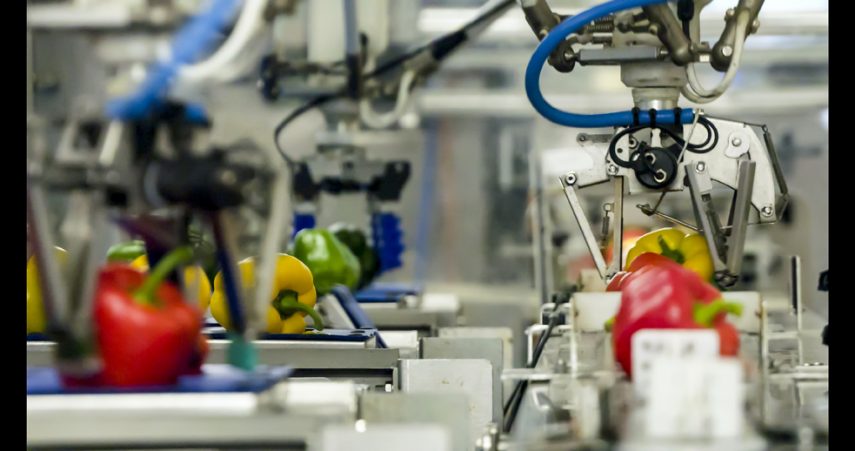COMBILO in Waddinxveen, the Netherlands, specialises in the import, export, packing, storage, shipment, and distribution of fresh fruit and vegetables. With the help of a vision system and delta robots supplied by Omron, EasyPack Technologies has automated how Combilo’s bell peppers are picked up and positioned. The result, according to the company, is a process that is more efficient and less prone to failures.
Combilo Production Manager Marcel Villerius said, “We are constantly looking for ways to improve our efficiency and are attempting to automate our operations as much as possible”.
Since 2015, the hall has hosted a robot that is part of a packaging line for “traffic lights”; packets that each contain one red, one yellow, and one green bell pepper. Combilo decided to purchase a robot-assisted line to make packaging the triple-packs of bell peppers more efficient.
“The automated line essentially does the same thing as a traditional line,” said Jeroen Bugter, Director of EasyPack Technologies, the company that developed the robot-assisted line. “An employee fills the trays with bell peppers of each colour, before three robots assume the role of the employees who place the bell peppers on the belt.
“The robots pick up the bell peppers and correctly position them on the belt in the correct colour order, before they are sent through the flow packer. The process following the packaging machine stage remains the same.”
Although the role of the robots may seem limited when viewed in isolation, the robots’ control mechanism is underpinned by an intelligent concept. “Picking up items by hand results in packages that are too heavy and contain too much product or packages that are too light and have to be rejected,” said Villerius.
But that is not all. After the bell peppers are weighed, the vision system — comprising three cameras — relays the position, the location of the bell peppers and the shape of the stem to the system. This then allows the system to calculate precisely how the bell pepper should be packaged and turned so that it can be placed in the correct position on the belt.
According to Villerius, working with bell peppers is especially difficult because their shape varies so much. And their stems are also rigid, so they have to face inwards to prevent the packaging from ripping.
Two companies were involved in developing the automated packaging line. The contractor for the project was EasyPack Technologies; a young company that develops and builds packaging machines for the food industry. EasyPack worked closely with Rons Electronics Supplies; a regular partner that handled the electronics and controls. Virtually the entire control mechanism of the robot application—with the exception of the load cells and the weight converter—was supplied by Omron.
Jeroen Bugter from EasyPack Technologies explained which components were used for the installation: “We used three Omron R6Y Delta-3 robots. These are waterproof variants that can be cleaned thoroughly; this is important in the food industry, which sets high standards for hygiene.”
Each robot has four servo drives that control the three robotic arms and the rotation axis. Omron also supplied the FH-5010 vision system with three cameras and the controllers for the conveyor belts. Each robot has its own control box for the servo drives, and the central control box contains no fewer than 27 frequency controllers for the belts, as well as a NJ501 robotics controller.
“Rejected packages have to be unpacked manually and the bell peppers have to be returned to the start of the line. This is a time-consuming process, and the extra handling is detrimental to the quality of the bell peppers,” said Villerius.
“The load cells and the weight converter control the robots so that the vast majority of packages now come out at the desired weight. The robots save us time, reduce the number of rejected packaged products, and use less packaging material.”

